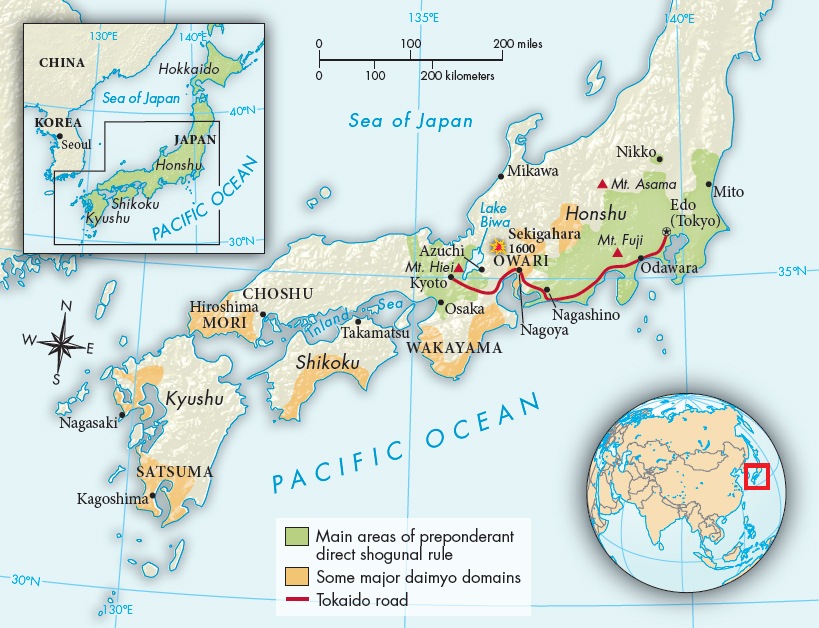Tokugawa Government
Over the course of the seventeenth century the Tokugawa shoguns worked to consolidate relations with the daimyo. In a scheme resembling the later residency requirements imposed by Louis XIV in France (see “The Absolutist Palace” in Chapter 18) and Peter the Great in Russia (see “Peter the Great and Russia’s Turn to the West” in Chapter 18), Ieyasu set up the alternate residence system, which compelled the lords to live in Edo every other year and to leave their wives and sons there — essentially as hostages.
The peace imposed by the Tokugawa Shogunate brought a steady rise in population to about 30 million people by 1800. To maintain stability, the early Tokugawa shoguns froze social status. Laws rigidly prescribed what each class could and could not do. Daimyo, for example, were prohibited from moving troops outside their frontiers, making alliances, and coining money. As intended, these rules protected the Tokugawa shoguns from daimyo attack and helped ensure a long era of peace.
The early Tokugawa shoguns also restricted the construction and repair of castles — symbols, in Japan as in medieval Europe, of feudal independence. Continuing Hideyoshi’s policy, the Tokugawa regime enforced a policy of complete separation of samurai and peasants. Samurai were defined as those permitted to carry swords. They had to live in castles, and they depended on stipends from their lords, the daimyo. Samurai were effectively prevented from establishing ties to the land, so they could not become landholders. Likewise, merchants and artisans had to live in towns and could not own land.
After 1639 Japan limited its contacts with the outside world because of concerns about both the loyalty of subjects converted to Christianity by European missionaries and about the imperialist ambitions of European powers (discussed below). However, China remained an important trading partner and source of ideas. The Edo period also saw the development of a school of native learning that rejected Buddhism and Confucianism as alien and tried to identify a distinctly Japanese sensibility.
